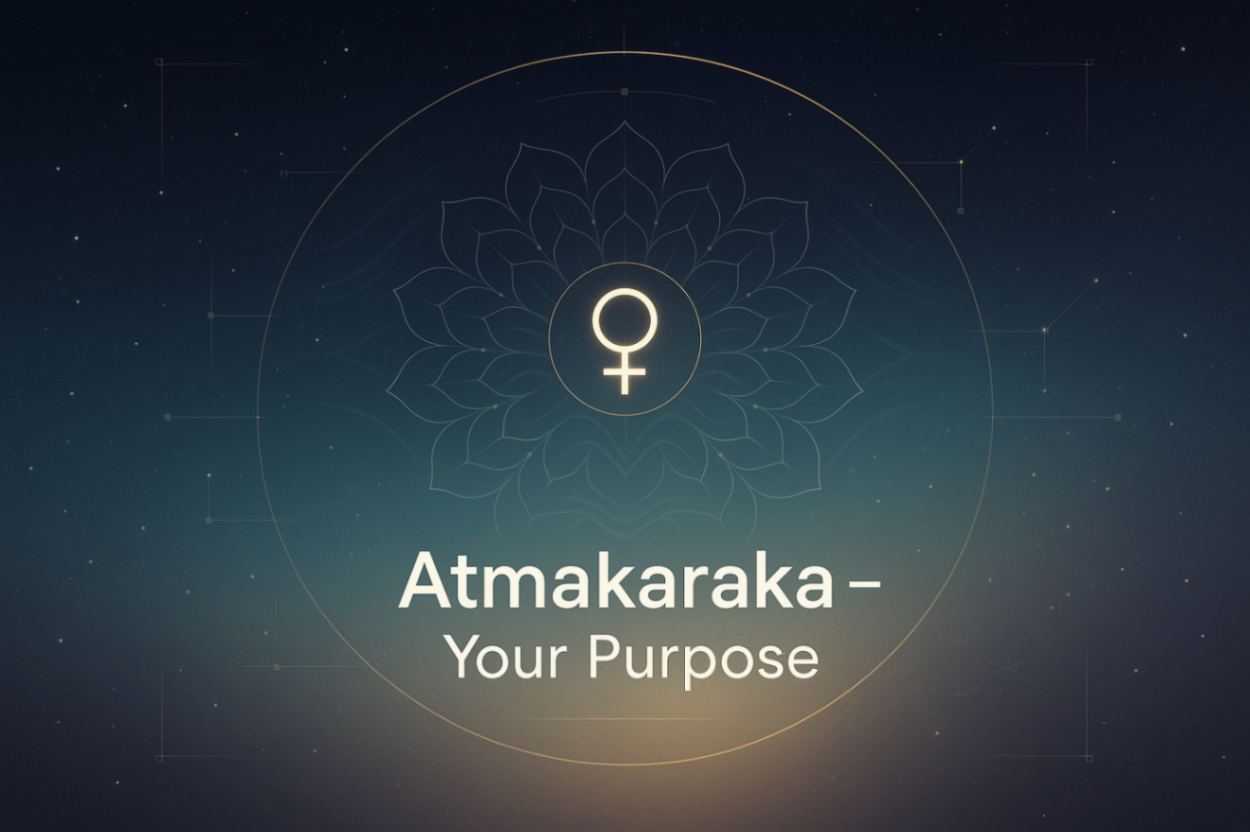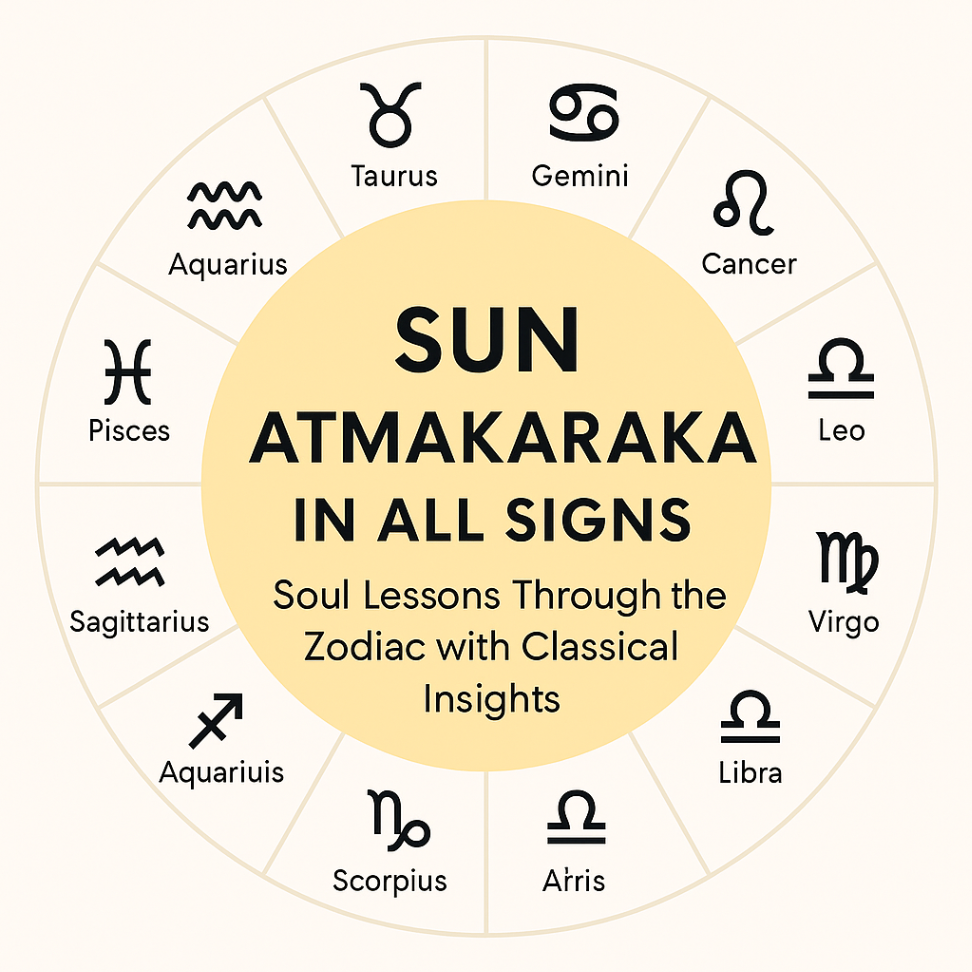Introduction:
The discourse on Vedic astrology not only encompasses the understanding of celestial influences on Earth but also extends to practical methodologies for interpreting these cosmic signals. This article delves into both Vedic and Jaimini astrology, offering a clear pathway for practitioners to apply these age-old wisdoms in a contemporary context.
Fundamentals of Jaimini Astrology:
Jaimini astrology, a major branch of Vedic astrology, introduces unique concepts like Karakas (significators), Rashi Dashas (sign-based dashas), and various other tools specifically designed to predict significant life changes and personality traits. Jaimini astrology is structured around a set of sutras written in cryptic Sanskrit, making them challenging to interpret without deep study. Unlike Parashari astrology, which is primarily based on planets and their aspects, Jaimini astrology places greater emphasis on the signs themselves and their dasas (periods of influence).
Key Concepts and Techniques:
In addition to the basic elements of astrology such as planets, signs, and houses, Jaimini astrology incorporates advanced techniques like the use of Arudha Lagna (image of a house), Upapada Lagna (marriage and relationship marker), and Jaimini aspects. These tools are essential for astrologers to provide more accurate and nuanced interpretations of a birth chart.
Karaka System: Jaimini introduces a unique set of 'Karaka' or significators. In this system, planets are assigned roles based on their degrees in the horoscope rather than their natural significations. For instance, the planet with the highest degree in a sign becomes the Atmakaraka, or the soul significator, playing a crucial role in an individual’s life.
Rashi Dasha: Jaimini’s predictive system is primarily sign-based rather than planet-based. The dashas are calculated from the sign that rises at the eastern horizon (Lagna) at the time of birth, providing a sequence of periods that are used to predict significant life events.
Argala System: This involves understanding planetary interventions and blockages through signs, which provides a nuanced tool for prediction, focusing on how planets and signs interact to influence life events.
Aspects in Jaimini Astrology: Unlike the Parashari system where planetary aspects are considered, Jaimini emphasizes sign aspects. Signs of a similar nature aspect each other, adding layers of meaning to the horoscope.
The Role of Nakshatras and Dashas:
The detailed analysis continues with a discussion on Nakshatras and the Dasha system. Nakshatras provide deeper insights into an individual’s psychological makeup and karmic direction, while the Dasha system outlines the timing of significant life events. Understanding these elements is crucial for predicting periods of prosperity or challenge.
Nakshatras: These are the lunar mansions or sectors along the ecliptic that provide deeper insight into the emotional and spiritual motivation of an individual. Each Nakshatra has specific attributes and is ruled by a particular deity, planet, and provides unique qualities to the planet or the moon's position within them.
Dashas: This is a predictive system in Vedic astrology that helps in determining the timing of events in a person's life. The system is based on the planetary periods with each period ruled by a specific planet, and each Dasha period can bring forth different results depending on the lordships of planets during those periods.
Integration of Modern and Traditional Techniques:
This hybrid approach allows astrologers to enhance the accuracy of their readings and adapt to the needs of contemporary clients who seek guidance.
Modern Techniques:
Simultaneous Use of Systems: The discussion emphasizes using the Parashari and Jaimini systems together, blending their unique strengths. Parashari astrology provides a broad and traditional framework for interpreting planetary influences, while Jaimini offers specific indicators (like Karakas and Rashi Dashas) that can refine predictions.
Refinement of Predictions: Modern computational tools are implied to be helpful in refining the exact timings and interpretations provided by classical methods. This might involve using software like DKSCORE to calculate precise planetary positions and dasha periods, enhancing the accuracy of traditional prediction techniques.
Traditional Techniques:
Foundational Principles: The core of the discussion remains rooted in traditional concepts such as the examination of Bhavas (houses), Karakas (significators), and Dashas (planetary periods). These elements are essential for assessing life events like marriage, career changes, and other significant transitions.
Use of Nakshatras and Dasha Systems: Traditional techniques extensively use Nakshatras (lunar mansions) and various Dasha systems to predict timing and nature of life events, relying on ancient texts and astrological lore to guide interpretations.
Integration for Enhanced Predictions:
Case Studies and Practical Application: By applying both modern and traditional approaches to hypothetical or historical cases, astrologers can demonstrate how integrated techniques offer more nuanced insights. This might include predicting marriage through both the Dasha system and transits, or assessing career changes by combining the 10th house analysis with modern career theories.
Balancing Modern Insights with Classical Wisdom: The integration is not just about using modern tools for calculation but also involves interpreting these results through the lens of classical wisdom. For instance, modern astrologers might use software to calculate planetary periods but will interpret these periods using traditional rules regarding house lordships and Karakas.
Practical Application of Jamini System:
The practical application of the Jamini system in astrology illustrates how to time significant events like marriages and career changes. This system, when used in conjunction with the foundational principles of Prashar astrology, provides comprehensive predictions and insightful readings.
Planetary Influences and Predictive Techniques:
Discussion details how different planets and their positions influence the personal and professional life events predicted through the Jamini system. Specific examples demonstrate the application of these techniques in real-world astrological readings.
Predicting Marriage Timing
The use of the 7th house (Saptam Bhava) for predicting marriage timing. In Vedic astrology, the 7th house is crucial for relationships and marriage. The discussion includes:
Dasha System: The period during which a planet ruling the 7th house or viewing the 7th house becomes active (its Dasha period) is identified as potentially significant for marriage. The linkage between planets viewing the 7th house and their planetary periods (Dashas) is considered to identify favorable times for marriage.
Darakaaraka: This is a Jaimini astrology concept where the planet with the lowest degree (excluding Rahu and Ketu) is considered significant for marriage. The placement of Darakaaraka and its influence by transit or during its Dasha period is analyzed to predict marriage.
Predicting Career Prospects
Career predictions are with reference to the 10th house (Dasham Bhava), which is the primary house for career and professional life.
Amatyakaraka: This is the planet with the second highest degree in the chart and plays a significant role in career predictions. Examining the Amatyakaraka’s placement in the 10th house or its relationship with the 10th house lord.
Dasha and Bhava: The period (Dasha) of the 10th house lord or the planets influencing the 10th house, and their position in the horoscope, are analyzed to predict career advancements or changes.
Examples and Techniques Discussed:
Transit and Dasha Analysis: Both marriage and career predictions heavily involve analyzing the Dashas or planetary periods and their transits over key houses or points in the horoscope.
Rahu and Ketu in the Jamini System:
This section offers an in-depth look at the roles of Rahu and Ketu, the lunar nodes, within the framework of the Jamini system, explaining their significant but often subtle influences during various Dasha periods.
Rahu and Ketu in Jaimini Astrology:
Exclusion in Certain Calculations: Rahu and Ketu, being shadow planets or Chaya Grahas, do not have lordship over any zodiac signs and are often excluded in certain traditional calculations within the Jaimini system. Specifically, they are not considered when calculating Rashi Dashas directly because these dashas are sign-based and depend on planetary lordship.
Influence in Chara Dasha: Despite their exclusion in some aspects, Rahu and Ketu are very much considered in Chara Dasha, a pivotal Jaimini technique. Their placement and aspects can significantly influence the interpretation of the results during the dasha periods they impact.
Special Rules in Scorpio and Aquarius: In the context of Scorpio and Aquarius dashas, Rahu and Ketu assume critical roles. Scorpio, traditionally ruled by Mars and co-ruled by Ketu in Vedic astrology, and Aquarius, traditionally ruled by Saturn and co-ruled by Rahu, follow unique rules:
For Scorpio, if Mars is present, then Ketu’s position and aspects are considered up to where Mars is positioned within the zodiac. This consideration can extend the effects of the dasha period based on Ketu’s influence.
Similarly, in Aquarius, the presence of Saturn can extend the effects of the dasha period up to where Rahu is positioned.
Practical Implications: The influence of Rahu and Ketu in these signs is specifically analyzed for their ability to extend or alter the typical results of the dasha periods. For example, their placement might indicate periods of transformation, unexpected changes, or significant karmic events during their dasha or sub-dasha periods.
Exceptional Situations: There are exceptions based on the specific chart being analyzed. The strength and position of Rahu and Ketu, along with their aspects and conjunctions with other planets, can lead to significant deviations from standard interpretations.
Blending Systems for Enhanced Predictions:
The article concludes with a strong endorsement for the blending of Jaimini and other astrological systems to provide more enriched and detailed predictions. This approach is highlighted through practical examples and case studies, showing the effectiveness of a combined methodology.
The rich tapestry of Vedic and Jaimini astrology offers a detailed and dynamic approach to understanding life's complexities. By integrating traditional methods with modern practices, astrologers are equipped to offer precise and actionable guidance, helping individuals navigate their paths with foresight and clarity.
Listen to the Full video

























